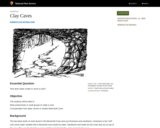
How does water create or carve a cave?
- Subject:
- Agriculture, Food and Natural Resources
- Career and Technical Education
- Material Type:
- Activity/Lab
- Author:
- National Park Service
- MAMMOTH CAVE NATIONAL PARK
- Date Added:
- 03/26/2024

How does water create or carve a cave?
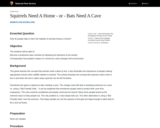
Objective
The students will be able to:
Become a productive team member by following the directions to the activity.
Conceptualize how people’s impact on a forest (or cave) changes that environment.
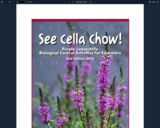
Students will learn the name(s)and identifying characteristics of invasive plants. Students will be familiar with the concept of biological diversity (biodiversity) and why it is important. Students will describe how diversity can be measured and expressed with a mathematical index. Students will understand how useful a non-biological model
can be in describing biological processes. Students will understand the effect an invasive species such as purple loosestrife can have on diversity in the biological community it invades.
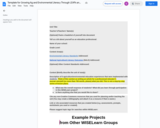
Please make a copy of this template.
Customize it for your project.
Send your completed project to sandy@fieldedventures.org by May 30, 2024.
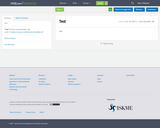
Test

This resource is a step by step lesson that aims to educate the learner about safe and unsafe drinking water, how to make and use an aquifer using a cup and educate how groundwater can be contimed making it unsafe to drink. Also this lesson has objectives, material list, procedure, and follow up sections.

Dive in with NSF funded researcher John Long and his robotic sharks. A professor at Vassar College, John Long and his team study real live sharks and their vertebral columns. They then takes these findings and design computer models and artificial vertebral columns to understand sharks' movement and biomechanics.
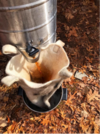
Author: Lucille Burr GrignonCurrently teaching from my Indigenous Homestead/Gardens. Ancient Roots Homestead in Bowler, WisconsinAncient Roots Homestead collaborates with students, elders, community members in the surrounding Tribal Nations– both Menominee and Stockbridge-Munsee and beyond. We recognize all students learn in different ways. Some students join us in person, while others join us virtually. People of all ages are invited to tell stories, garden, connect and reconnect, preserve food, make music, create art, and learn different Indigenous life skills, and more.Maple Sugar season is a beautiful time for learning. So much is happening in the world around us, all we have to do to learn is observe. The seasons change, the trees grow and develop. From the tapping of the trees, boiling down, canning, educating, and processing. It is very beautiful from beginning to end. The lessons learned while working with maple trees can be directly applied and used in our own lives.The culturally-relevant text sets offer different perspectives for students to see as well as wonderful conversation starters. Students learn of different careers within the Indigenous World. Some of those careers being: Traditional Seed Keepers, Gardeners, Knowledge Keepers, Storytellers, and More!
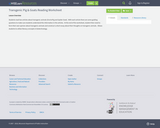
Students read two articles about transgenic animals (EnviroPig and Spider Goat). With each article there are some guiding questions to make sure students understand the information in the articles. At the end of the worksheet, student then need to form their own opinion about transgenic animals and construct a short essay about their thoughts on transgenic animals. Allows students to utilize literacy concepts in biotechnology.
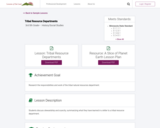
Wise management of tribal lands and natural resources is very important for the future of American Indian communities. Tribes depend on these resources to sustain their economies and cultures long into the future. Tribal leaders know that lands and natural resources are at risk of degradation and there is a need for good management to protect and restore those resources. Each tribe has its own unique and special natural gifts. Coastal tribes have the salmon, Alaska Natives tribes have the caribou, and Great Plains tribes have the bison. In the Great Lakes region there is wild rice and maple syrup. In the Northwest, there is the whale.
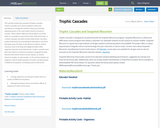
This activity reviews the concept of trophic cascades. Trophic cascades occur when predators reduce the abundance or change the activity of their prey, thereby allowing species in the next trophic level to increase in number. These indirect effects by the predator can trickle down (or cascade) to many lower levels of the food chain. In a classic example, sea otters protect kelp forests, sea otters protect kelp forests by controlling the abundance of urchins that graze upon the kelp. In the absence of otters, urchins consume most of the kelp and negatively affect other organisms that live in the kelp forests.
Trophic cascades have been described in numerous ecosystems ranging from kelp forests of the Pacific Ocean to arctic islands, to Central American jungles, to salt marshes. In this activity student use organism cards to build examples of trophic cascades based in different ecosystems, including several in Wisconsin!

This is a hands on activity where students will see how instruments can be used to warn people of a tsunami. This activity demonstration can be flexible to the needs and ages of the students and can be a game or a conversation.

Featuring post-secondary career information from Dr. Kevin Fermanich, Professor of Natural and Applied Sciences, UW-Green Bay
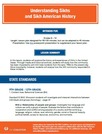
In this lesson, students will explore the history and experiences of Sikhs in the UnitedStates. Through media and historical archives, students will study how the communityhas been impacted by anti-Sikh hate incidents from the early 1900s to the present day.More importantly, however, students will analyze how the Sikh community responded tothese incidents.
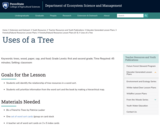
Students will identify the relationship of tree resources in a word sort.
Students will prioritize information from the word sort and the book by making a hierarchical map.

Join Danny Rubin, founder of Rubin, and guest Dr. Alyson Yaary from Animal Medical Center in Virginia as they discuss the world of a "vet" and how students can get started in the profession today. Students and teachers should also make use of the webinar worksheet at https://rubineducation.com/wp-content/uploads/2021/11/Rubin-Webinar-Worksheet-Q-and-A-about-Veterinarian.docx

Featuring career information from Liana Strechenbach,Veterinarian with Critter Care Animal Clinic
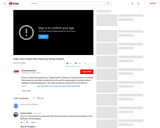
A tour of a beef plant guided by Dr. Temple Grandin, Professor of Animal Science at Colorado State University and widely considered to be the world's leading expert on humane animal handling at meat packing plants. This video provides an honest look at how cattle are handled at meat packing plants.
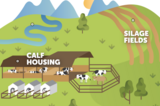
Learn what it takes to get milk from the farm to your table on real Washington dairy farms. It takes serious dedication to keep cows healthy and comfortable while preserving the planet—see everything that goes into producing dairy in Washington’s own backyard with this interactive lesson plan by the Washington Dairy Council for grades 6-8.
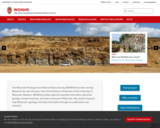
The Wisconsin Geological and Natural History Survey (WGNHS) has been serving Wisconsin for over 125 years. Part of the Division of Extension at the University of Wisconsin–Madison, WGNHS provides objective scientific information about the geology, mineral resources, and water resources of Wisconsin. We conduct research, map Wisconsin’s geology, and share information through our publications and outreach.
WGNHS has been producing geologic maps, scientific reports, and more for over 125 years. Our publications catalog offers thousands of maps, reports, datasets, and other publications—all of which are available to view and download for free.
The Wisconsin Geological and Natural History Survey (WGNHS) was created by the Wisconsin Legislature in 1897. It is the descendant of earlier state surveys in Wisconsin, which date back to 1854.
WGNHS, part of the Division of Extension at the University of Wisconsin–Madison, is an interdisciplinary organization that conducts natural resources surveys and research to produce information used for decision-making, problem-solving, planning, management, development, and education. Survey is defined to include resource inventory as well as basic and applied research and analysis. WGNHS has no specific regulatory or enforcement responsibilities.
Mission of WGNHS:
Understanding the earth • Charting its history • Sustaining its resources
The Survey conducts earth-science surveys, field studies, and research.
We provide objective scientific information about the geology, water resources, and mineral resources of Wisconsin.
We collect, interpret, disseminate, and archive natural resource information.
We communicate the results of our activities through publications, technical talks, our website, social media, and responses to inquiries from the public.
These activities support informed decision making by government, industry, business, and individual residents of Wisconsin.